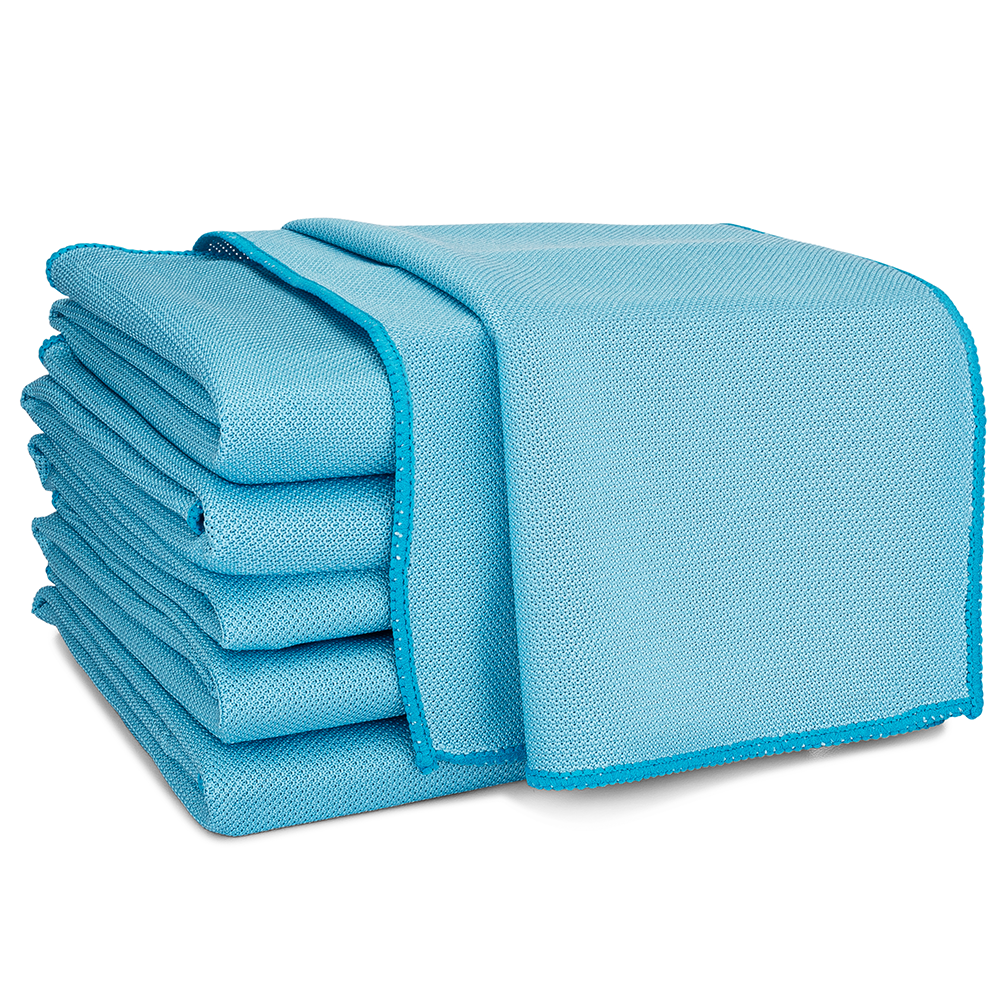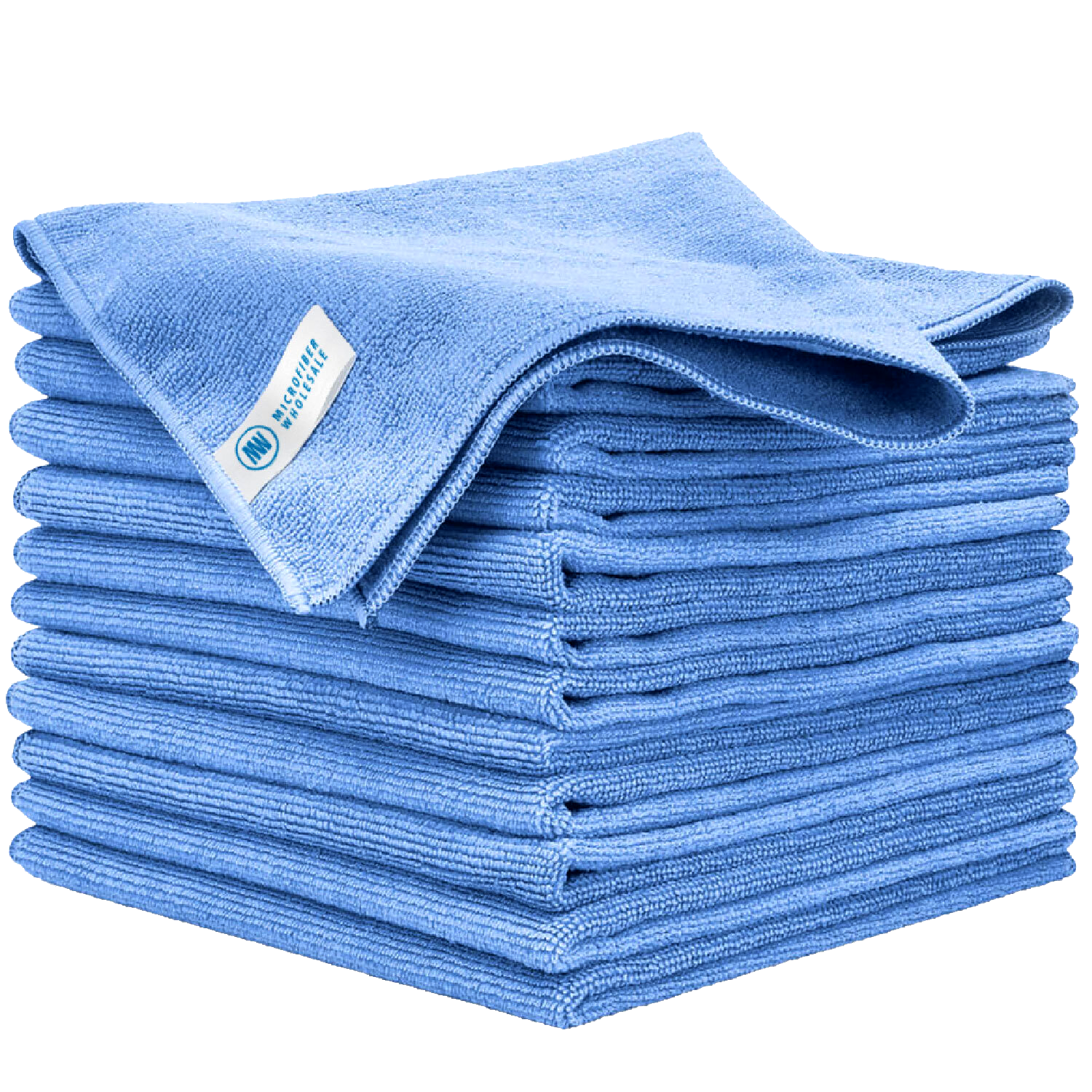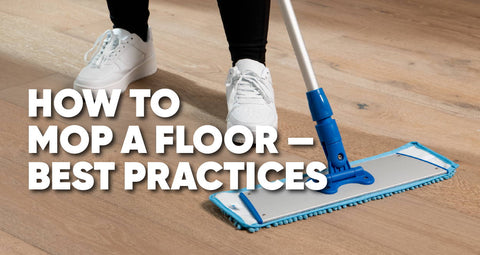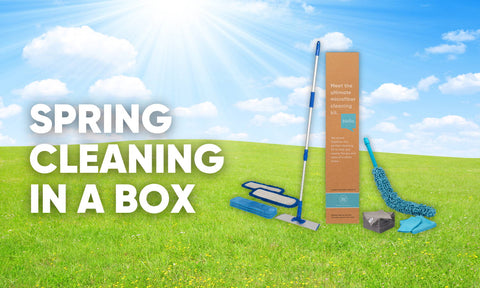1. Failure to Pre-Clean the Surface
It’s a no-brainer that dirty glass and mirrors can cause streakiness if not cleaned properly. This is especially true in kitchens, bathrooms, or on a car’s exterior windows because it’s where you’ll find the most stuck-on, grimey soils.
To clean the surface properly, it’s important to identify the dirt first. Here are the most common glass and mirrored surfaces and soils, and how to clean them.
Windows
One of the most time-consuming tasks when cleaning a house or office is the windows. Not only can it be tedious, but it’s frustrating when you spend time meticulously wiping over each pane of glass only to come back later and see streaks everywhere.
Most window washers will use a solution of distilled water and detergent with a squeegee, which is great for water stains and dust. But a squeegee can’t scrub stuck-on soils, like bug residue and mud.
A good quality microfiber towel, on the other hand, is excellent at spot cleaning and lifting off any soil. Just use it damp or with a detergent solution.
Kitchen Glass
Where there’s smoke, there’s fire. And where there’s fire, there’s sometimes steam and grease. Glass surfaces located near your kitchen stovetop, such as windows, are highly susceptible to being splattered with cooking residue during meal preparation.
The best way to remove this oily residue is to use a high-quality microfiber towel with detergent and warm water. Detergent cuts through oils and fats on your dishes, so it will also work on glass.
Bathroom Mirror
The mirror in your bathroom is prone to daily smatterings of lotions, toothpaste, and even bodily fluids (ick!), most of which are oil-based.
As mentioned above, the best way to remove oils and grease is to use a detergent with microfiber.
Household Mirrors
The mirrors throughout your home are dust and fingerprint magnets, but generally easy to clean — as long as you’re using the right supplies.
A high-grade microfiber duster is a great tool for picking up any fine dust particles, and a damp microfiber towel will lift off smudges and fingerprints in a flash.
Car Exterior Windows
Bug guts, dirt and dust, and flecks of mud are regularly found on the exterior of car windows. The stuck-on soils, particularly bug residue, can be especially difficult to remove the longer you leave it on there, which is a pain when you’re trying to achieve spotless glass.
Use vinegar or a specific bug remover solution found in hardware stores to dissolve the little buggers, followed by a plastic scraper. For other soils, warm soapy water and a microfiber towel should do the trick.
Car Interior Windows
Your car’s interior windows should be a cinch to clean because they don’t usually get soiled with various types of grime and dirt as the exterior does. At most, they’ll likely have fingerprints. It’s also very common for the windshield to get what’s known as window haze, which isn’t difficult to clean but can make it harder to get a crystal-clear finish.
To remove fingerprints and foggy residue, all you need is a damp microfiber towel — that’s it. You don’t even need detergent. The fibers of your microfiber towel are effective enough to lift any residue, leaving your windshield clear of soils.

















 By continuing with your order, you acknowledge and agree to the following:
By continuing with your order, you acknowledge and agree to the following: